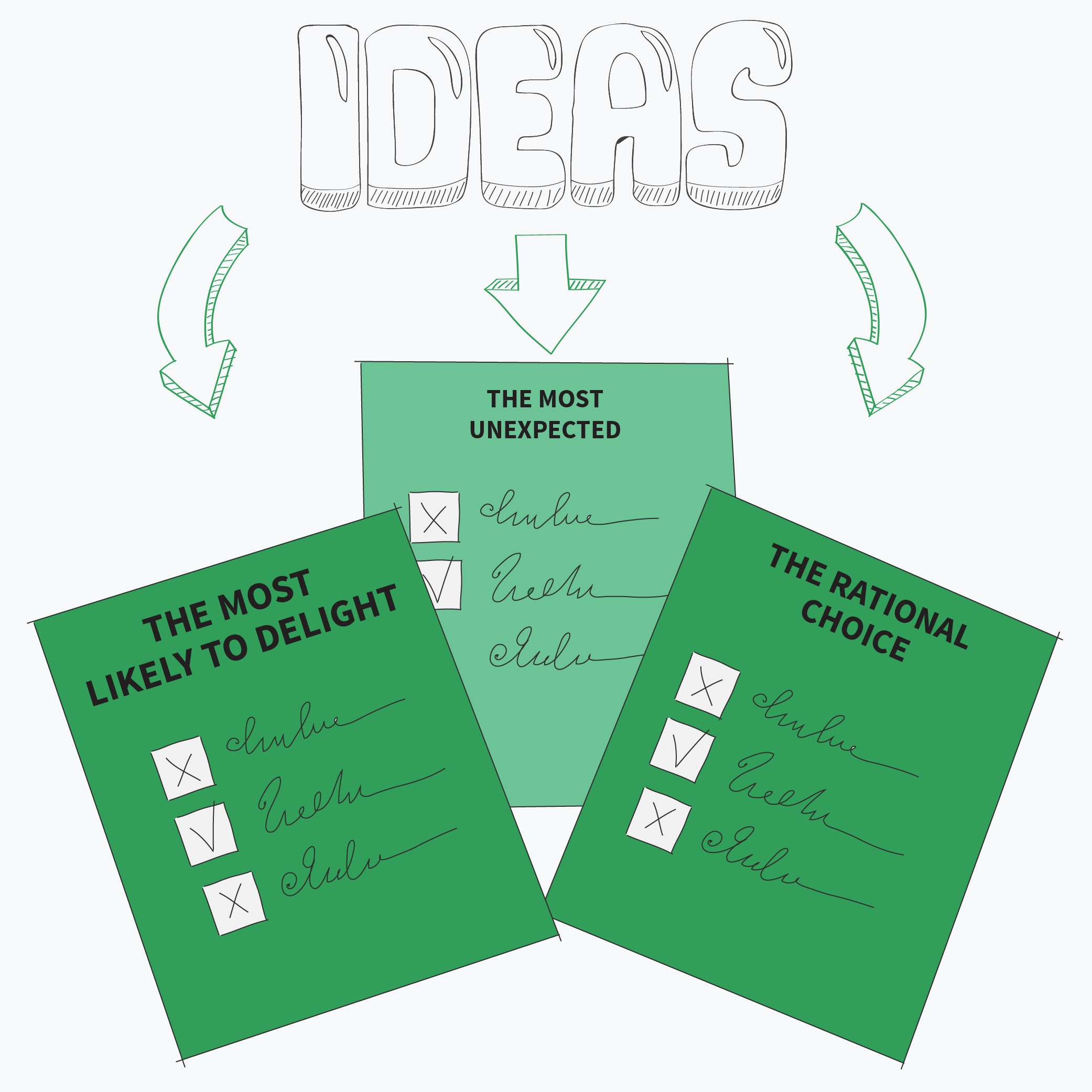Idea voting
Why?
The divergent phase often results in many different ideas. Autonomous voting offers an easy way to make a quick selection of some of these ideas without the need for team consensus, which can often be time-consuming.
How?
The students evaluate their ideas according to a set of voting criteria, such as ‘The most likely to delight’, ‘The rational choice’, or ‘The most unexpected’, etc. Since the voting is anonymous, each student is provided with a personal voting scheme, where he or she can record the votes. When finished, the schemes are collected and the points summarized in order to identify the ideas that received the highest scores according to the selected voting criteria. Thus, the students might abandon the ideas that have low scores on all criteria, or the ideas that have high scores on negative evaluation criteria, and choose to work further on the ideas that received high scores on positive evaluation criteria.
Tips
The students can also undertake an open voting process, where they write down each idea on a poster and hang it on a wall. Now, each student uses stickers or post-it notes in different colours to represent the different voting criteria. Thus, a blue sticker might indicate the most unexpected idea, while a grey sticker might indicate the most rational choice.
Literature
Higgins, James M. (1994), 101 creative problem solving techniques. New Management Pub. Co

